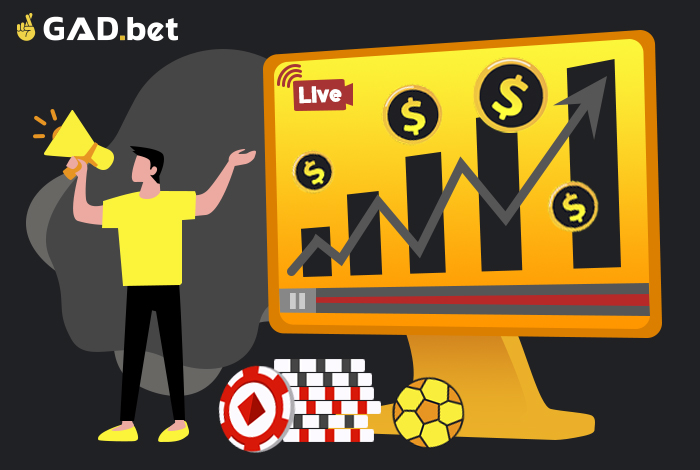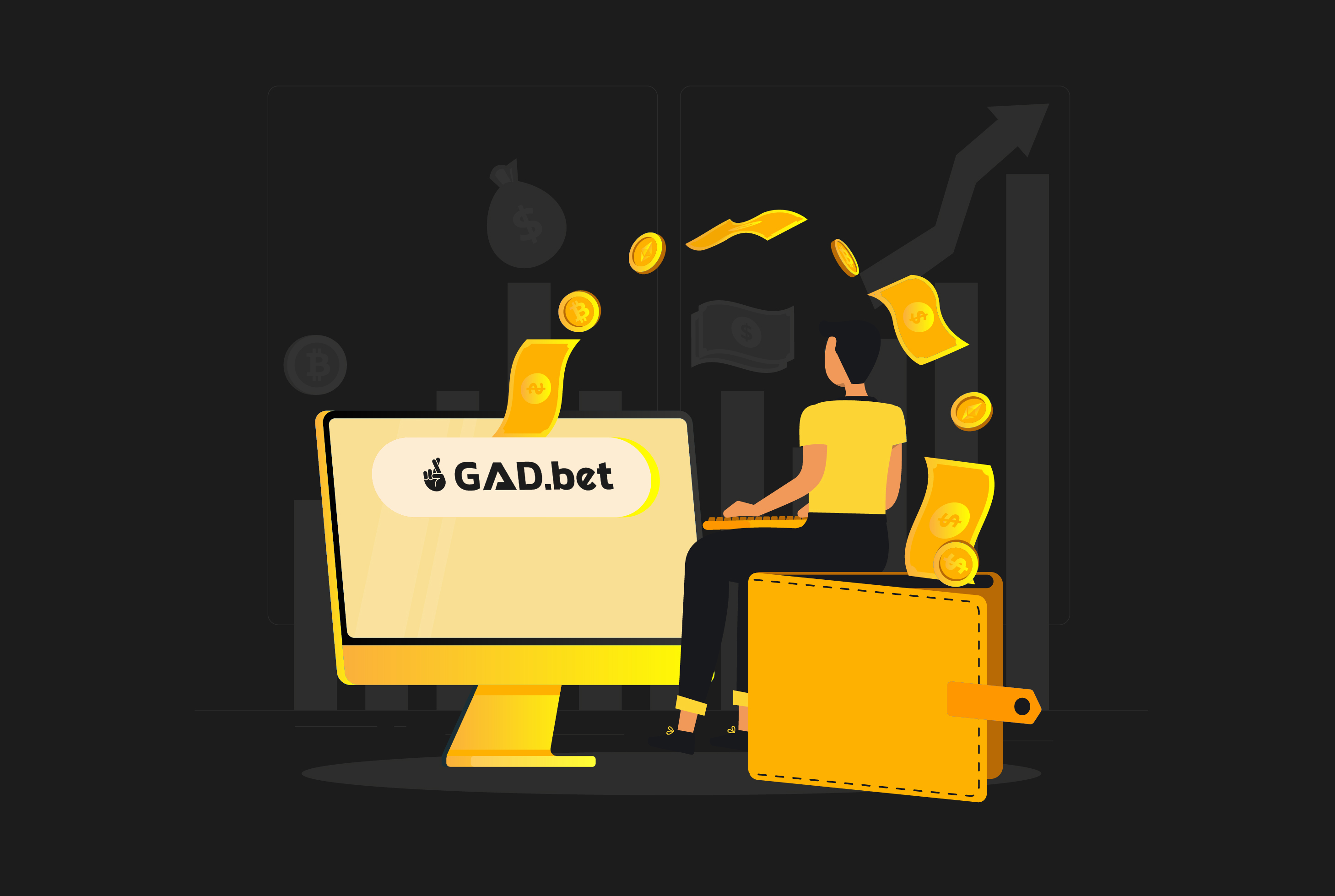Content
- Why is streaming promising?
- How to choose a streaming platform?
- Streaming on the Gad Bet platform
- Game streaming on facebook
- What are the benefits of streaming on Twitch?
- What are the disadvantages of streaming on twitch?
- How to upload a stream to twitch?
- How to choose music for streaming?
- How to stream on YouTube?
- How to start streaming on tik tok?
- Streaming Rules on Tik Tok
Why is streaming promising?
Streaming is promising for several reasons:
- Growing audience: The number of people watching streams is increasing year by year, as more and more people get access to high-speed internet and mobile devices. This creates a large potential audience for streamers, with many opportunities to build a loyal following and monetize their content.
- Low barriers to entry: Starting a stream requires only a few basic tools and a reliable internet connection. This makes streaming accessible to anyone who wants to try it out, regardless of their location, background or financial resources.
- Interactive content: Streaming allows for real-time interaction between the streamer and their audience, creating a sense of community and engagement. This can help streamers build a dedicated fanbase and improve their content through feedback and suggestions.
- Monetization opportunities: Streaming provides various ways for streamers to earn money, such as through advertising, sponsorships, donations, and subscriptions. This can allow streamers to turn their hobby into a profitable career.
- Diverse content: Streaming platforms offer a wide range of content, including gaming, music, talk shows, and more. This diversity creates a lot of opportunities for streamers to explore their interests and find their niche within the community.
Overall, streaming offers many opportunities for creativity, community building, and financial gain. As technology continues to evolve, and streaming platforms become more accessible, we can expect to see continued growth and innovation in the world of streaming.
How to choose a streaming platform?

Choosing a streaming platform depends on a few key factors, including your goals as a streamer, the content you want to stream, and the features and tools that are important to you. Here are some tips to help you choose the right streaming platform:
- Determine your goals: Are you looking to build a large audience, monetize your content, or connect with a specific community? Knowing your goals will help you identify the platform that aligns best with your needs.
- Consider your content: Different platforms cater to different types of content, so it’s important to choose a platform that supports the kind of content you want to stream. For example, Twitch is known for gaming streams, while YouTube is popular for music and other types of content.
- Look at the features: Each platform has its own set of features and tools for streamers, such as subscriber buttons, donation buttons, and chat integrations. Make sure the platform you choose has the features you need to create the type of content you want.
- Research the community: The community on a streaming platform can make a big difference in your experience as a streamer. Look at the demographics of the platform’s user base, as well as the types of content that are popular, to see if it’s a good fit for you.
- Check the terms and conditions: Make sure you read the platform’s terms and conditions to understand what is allowed and what isn’t. Some platforms have specific rules around content, advertising, and monetization, so it’s important to be aware of these before you start streaming.
By taking these factors into account, you’ll be able to choose a streaming platform that best fits your needs and goals as a streamer.
| Feature | Twitch | YouTube | Facebook Gaming | TikTok |
| Platform focus | Gaming | Gaming and other content | Gaming and esports | Music and lifestyle |
| Monetization | Ads, subscriptions, sponsorships, donations | Ads, sponsorships, memberships, Super Chat, Super Stickers | Ads, sponsorships, fan support | Live gifts, virtual items |
| Audience size | Largest gaming audience | Large, diverse audience | Growing, smaller audience | Growing, younger audience |
| Content restrictions | Strict rules around content | Moderate rules around content | Moderate rules around content | Moderate rules around content |
| Chat moderation | Customizable chat, moderation tools | Moderation tools, slow mode | Moderation tools, slow mode | Moderation tools, slow mode |
| Streaming quality | High quality with options for customization | High quality with options for customization | High quality with options for customization | Limited customization options |
| Community features | Emotes, custom badges, Discord integration | Live chat, community posts, comment sections | Groups, fan pages, live events | Challenges, duets, collaborations |
| Accessibility | Mobile app, desktop app, web browser | Mobile app, desktop app, web browser | Mobile app, desktop app, web browser | Mobile app |
| Revenue sharing | Twitch takes a percentage of revenue generated | YouTube takes a percentage of revenue generated | Facebook takes a percentage of revenue generated | TikTok takes a percentage of revenue generated |
Streaming on the Gad Bet platform
Gad Bet is an online platform for sports betting, casino, and games. It was launched in 2021 and is a new player in the online gambling market. Gad Bet offers a wide range of sports events for betting, including football, basketball, tennis, hockey, and other sports.
In addition, Gad Bet has a casino section where various games are available, including slots, roulette, blackjack, baccarat, and others.
The Gad Bet website offers various bonuses and promotions for customers, such as free bets, cashback, and others. In addition, Gad Bet provides convenient methods for depositing and withdrawing funds, including bank cards, e-wallets, and others.
It is important to note that playing gambling games can be risky, and it is necessary to be cautious and responsible when choosing a platform for gambling. Before registering on Gad Bet or any other gambling platform, it is important to read the rules, terms, and security policies to avoid potential problems and negative consequences.
Game streaming on facebook
Game streaming on Facebook is a feature that allows gamers to livestream their gameplay to their Facebook audience. Launched in 2018, Facebook Gaming is a dedicated platform for game streaming and esports content, and it has quickly grown in popularity.
To start game streaming on Facebook, you first need to create a gaming creator page on Facebook. This page will serve as the home for all of your gaming content, including live streams, videos, and posts. Once you have created your page, you can begin setting up your stream.
Facebook Gaming offers various tools and features for streamers, including a custom dashboard for managing your content, a chat box for interacting with your audience, and the ability to monetize your content through ads, sponsorships, and donations.
One unique feature of game streaming on Facebook is the ability to create and join gaming groups. These groups allow gamers to connect with others who share similar interests and to share their content with a more targeted audience.
In addition to gaming, Facebook Gaming also features esports tournaments and events, as well as a library of games that can be played directly on the platform.
Overall, game streaming on Facebook offers a unique and engaging way for gamers to connect with their audience and build their brand. With its user-friendly tools and features, Facebook Gaming is a promising platform for those looking to enter the world of game streaming.
What are the benefits of streaming on Twitch?
Streaming on Twitch has several benefits for both new and experienced streamers:
- Large audience: Twitch is the largest streaming platform for gamers and has a massive audience of viewers who are always looking for new and exciting content to watch.
- Monetization opportunities: Twitch offers several ways for streamers to monetize their content, including ads, sponsorships, donations, and subscriptions.
- Tools and features: Twitch provides a range of tools and features for streamers, including customizable overlays, chat bots, and emotes, which can help improve the viewing experience for both streamers and their audience.
- Community: Twitch has a vibrant and engaged community of streamers and viewers, which can help new streamers build a following and connect with like-minded individuals.
- Flexibility: Twitch allows streamers to create and stream content on their own schedule, which can be beneficial for those who have other commitments or a busy lifestyle.
- Variety of content: Twitch is not limited to just gaming, but also features other categories such as music, art, and talk shows, which can provide a diverse range of content for both streamers and viewers.
Overall, Twitch offers a wealth of benefits for streamers, including a large and engaged audience, a range of monetization opportunities, and a variety of tools and features to improve the streaming experience.
What are the disadvantages of streaming on twitch?
While streaming on Twitch offers many advantages, there are also some potential disadvantages to consider:
- Competition: Twitch is a highly competitive platform with many established streamers, which can make it difficult for new streamers to gain traction and build an audience.
- Content restrictions: Twitch has strict rules around content that is allowed on the platform, which can limit the creative freedom of streamers.
- Revenue sharing: Twitch takes a percentage of the revenue generated by streamers through ads, subscriptions, and other monetization methods.
- Trolls and toxicity: As with any online platform, Twitch can be prone to trolls and toxic behavior from some viewers, which can create a negative environment for streamers.
- Technical issues: Streaming on Twitch requires a stable internet connection and a powerful computer, and technical issues such as lag and dropped frames can negatively impact the viewing experience for viewers.
- Limited audience: While Twitch has a large audience, it is primarily focused on gaming content, which may not appeal to all streamers or viewers.
Overall, streaming on Twitch can be a rewarding experience, but it also has its challenges and potential drawbacks. Streamers should carefully consider these factors and weigh the pros and cons before deciding to commit to the platform.
How to upload a stream to twitch?
To upload a stream to Twitch, follow these steps:
- Open your broadcasting software and locate the saved video file from your previous stream. This may be saved in your broadcasting software or on your computer’s hard drive.
- Log in to your Twitch account and navigate to your Creator Dashboard.
- Click on the “Content” tab, then select “Videos” from the drop-down menu.
- Click on the “Upload” button and select the video file you want to upload.
- Enter a title and description for your video, as well as any tags that may be relevant.
- Choose a thumbnail image for your video. Twitch will automatically generate some options for you, or you can upload your own custom image.
- Set the privacy settings for your video. You can choose to make it public or private, and select who can view it.
- Click on the “Publish” button to upload your video to Twitch.
- Once your video is uploaded, you can view it in your video manager and share it with your audience.
Note that Twitch may take some time to process and make your video available on the platform. It may take up to several hours before your video is fully processed and available for viewing.
How to choose music for streaming?
When choosing music for streaming, there are a few key things to consider:
- Licensing: It is important to ensure that the music you use is properly licensed for use in streaming content. Using copyrighted music without permission can result in legal issues and potentially expensive fines. Look for music that is licensed for use in streaming, such as royalty-free music, or obtain the proper licenses for any copyrighted music you want to use.
- Genre: Choose music that fits the tone and mood of your stream. If you are playing a fast-paced game, you may want to choose high-energy music to match the gameplay. On the other hand, if you are streaming a relaxing or creative activity, you may want to choose more mellow or ambient music.
- Audience: Consider the preferences and demographics of your audience when selecting music. Choose music that is likely to appeal to your target audience and avoid music that may be offensive or inappropriate.
- Theme: If your stream has a specific theme, such as a holiday or event, choose music that fits with that theme. This can help create a cohesive and engaging viewing experience for your audience.
- Use playlists: Creating playlists of music that fits the above criteria can help you streamline the process of selecting music for your stream. This can also help ensure that the music you choose is consistent with the tone and mood of your stream.
Overall, when choosing music for streaming, it’s important to ensure that it is properly licensed, fits the tone and mood of your stream, and is likely to appeal to your audience.
How to stream on YouTube?
To stream on YouTube, you will need to follow these steps:
- Set up your YouTube channel: If you do not have a YouTube channel yet, create one by signing in to your Google account and clicking on the “Create a channel” button. If you already have a channel, skip to step 2.
- Verify your account: To be able to stream on YouTube, you need to verify your account. Go to youtube.com/verify and follow the instructions to complete the verification process.
- Enable live streaming: In order to stream on YouTube, you will need to enable live streaming on your channel. To do this, go to your YouTube Studio dashboard and click on “Other Features” in the left sidebar. Then click on “Live Streaming” and follow the prompts to enable live streaming.
- Set up your streaming software: To stream on YouTube, you will need to use streaming software such as OBS or Streamlabs OBS. Follow the instructions provided by your streaming software to set it up for streaming on YouTube.
- Configure your stream settings: In your streaming software, configure your stream settings by entering your YouTube stream key and choosing the appropriate streaming server. You can find your stream key in the YouTube Studio dashboard under the “Live Streaming” section.
- Start your stream: Once your stream settings are configured, start your stream by clicking the “Start Streaming” button in your streaming software. Your stream will be live on your YouTube channel, and viewers can watch it in real-time.
- End your stream: When you are finished streaming, end your stream by stopping the streaming software. Your stream will automatically be saved to your YouTube channel as a video, which you can edit and share with your audience.
Note that there may be additional requirements or steps depending on your location and the type of content you plan to stream. Be sure to review YouTube’s terms of service and community guidelines before streaming to ensure that you are in compliance with their policies.
How to start streaming on tik tok?
To start streaming on TikTok, you will need to follow these steps:
- Set up your TikTok account: If you do not have a TikTok account yet, download the TikTok app from the App Store or Google Play Store and sign up for an account. If you already have an account, skip to step 2.
- Enable live streaming: To be able to stream on TikTok, you will need to enable the live streaming feature on your account. Go to your profile and click on the “+” icon to create a new video. Then swipe left until you see the “Live” option and click on it. Follow the instructions to enable live streaming.
- Configure your stream settings: Once live streaming is enabled, you will need to configure your stream settings. Click on the “Settings” icon in the top right corner of the screen and choose “Live Stream Settings.” You can customize your stream title, set a cover image, and choose whether to allow comments or not.
- Set up your streaming software: To stream on TikTok, you will need to use a third-party streaming software such as Streamlabs or OBS. Follow the instructions provided by your streaming software to set it up for streaming on TikTok.
- Connect your streaming software to TikTok: In your streaming software, connect your TikTok account by entering your login credentials. Then enter your stream key, which can be found in your TikTok “Live Stream Settings.”
- Start your stream: Once your stream settings are configured, start your stream by clicking the “Start Streaming” button in your streaming software. Your stream will be live on TikTok, and viewers can watch it in real-time.
- End your stream: When you are finished streaming, end your stream by stopping the streaming software. Your stream will be saved to your TikTok account as a video, which you can edit and share with your audience.
Note that there may be additional requirements or steps depending on your location and the type of content you plan to stream. Be sure to review TikTok’s terms of service and community guidelines before streaming to ensure that you are in compliance with their policies.
Streaming Rules on Tik Tok
TikTok has several rules and guidelines for live streaming on the platform to ensure the safety and security of its users. Here are some of the main rules for live streaming on TikTok:
- Age requirement: Users must be at least 16 years old to go live on TikTok.
- Content restrictions: TikTok has strict rules around content that is allowed on the platform, and these rules apply to live streaming as well. Users are not allowed to stream content that is violent, sexually suggestive, promotes hate speech or harassment, or violates any other community guidelines.
- Safety and privacy: TikTok encourages users to maintain their safety and privacy while live streaming. Users should not share personal information or reveal their location while streaming, and should not engage in behavior that could put themselves or others at risk.
- Music and copyright: Users should not use copyrighted music in their live streams without permission, as this can result in legal issues and potential fines. TikTok provides a library of music that can be used in live streams without copyright issues.
- Moderation: TikTok has a team of moderators who monitor live streams for content that violates the platform’s rules and guidelines. Users who violate these rules may have their streams removed or be subject to account restrictions or bans.
- Reporting: TikTok encourages users to report any live streams that violate the platform’s rules and guidelines. Users can report a stream by tapping the “…” button on the stream and selecting “Report.”
Overall, live streaming on TikTok can be a fun and engaging way to connect with your audience, but it is important to follow the platform’s rules and guidelines to ensure a safe and positive experience for everyone.








